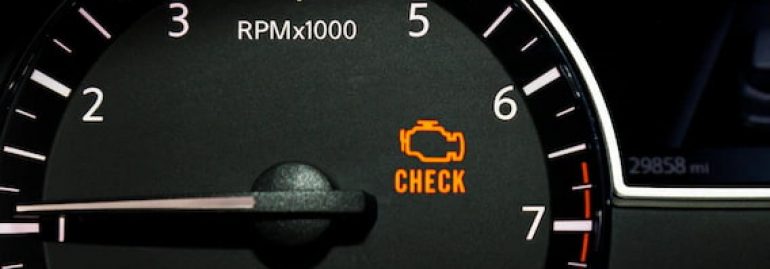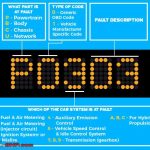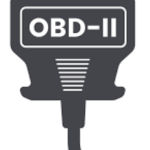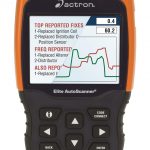You can learn how to read OBD2 fault codes easily by using the Carly app. The app is free and has premium features. Besides being free, this app also helps you identify developing problems in time. This way, you won’t have to pay for expensive repairs later on. However, if you’re not comfortable reading the codes, you can ask your mechanic for assistance. But for now, let’s look at some tips to help you get started.
Symptoms of a fault
The symptoms of an OBD code are not limited to just one type of vehicle. If you have a problem with your air conditioning system, you might receive a code related to this problem as well. You should contact a mechanic for further diagnostics, as the code may indicate a problem with the compressor. To get your car checked by a mechanic, contact AutoZone. They provide free diagnostics services for cars.
When reading OBD codes, a P0122 code indicates a fault in the TPS sensor. It can have a low voltage, as low as 0.20V. A visual inspection of the wiring might show that it is loose or is badly connected. Another P0131 code indicates low voltage in bank one sensor. These problems require immediate repairs. If your car has been in the shop for a while, you may want to take it to a mechanic as soon as possible.
An OBD-II diagnostic connector can be found under the dash near the steering wheel. Some vehicles may require you to remove the knee bolster panel to reach the connector. If you’re unsure where to find the diagnostic connector, consult your car’s owners manual. It is often hidden behind a panel, so you’ll need a scanner with a high-quality camera and a good lens.
OBD codes are only the first step in diagnosing a vehicle’s problem. They don’t tell you what system is malfunctioning, but they do give you an idea of which parts or systems need replacing. For example, a worn out alternator will generate several codes in a normal system. Therefore, it’s important to understand what a code means so you can take action.
If you’re unsure about the cause of the fault, you can try the temporary solution: disconnecting the power supply and battery cable. The loss of voltage wipes out the temporary memory. Once the fault is fixed, the Check Engine Light will illuminate again. Fortunately, this method does not result in any permanent damage to your vehicle. It’s a good way to test a car’s computer before you take it to a mechanic.
Meaning of a fault code
If you’re a newbie to OBD codes, the first step to solving the mystery of these codes is learning what they mean. Fault codes appear on an OBD scanner when your vehicle’s computer recognizes a certain code. OBD codes are stored in the car’s ECU, so the first letter of the code indicates which part of the vehicle is at fault. The next step is to identify the source of the fault, which may be a sensor or component.
Diagnostic Trouble Codes (DTC) are a series of five-character codes produced by your vehicle’s onboard computer. They’re a quick way for a mechanic to diagnose a problem. Using these codes can increase the safety and ROI of your fleet. These codes can be interpreted by using a comprehensive fleet management solution. You can find out which system is at fault by reading the code’s description.
If you’re having trouble understanding your car’s fault code, remember that it’s hexadecimal, not binary. The first two digits are generic, or global, codes. These codes apply to all cars, as long as they’re built to the OBD2 standard. They’re also more standardized, with the latest version containing over 11 000 definitions. To learn more about these codes, read our article below.
A vehicle’s OBD codes are a crucial aspect of vehicle maintenance. A lit Check Engine light can indicate a number of issues, from fuel system to ignition and transmission. A worn out alternator can set multiple fault codes, so it’s vital to understand which one is causing the problem. By understanding the fault code, you can make an informed decision on what to do next. Once you understand the meaning of a fault code, you can properly diagnose the problem and repair your vehicle.
Generally, a powertrain-related code is P0128. This means the engine’s coolant has reached a level below the thermostat regulating it. This code is universal, which means it’s standardized and can be interpreted according to the SAE definitions. If you have P0128, your car’s fuel and air metering system is malfunctioning. For instance, a P0306 fault code could mean your car has a problem with the sensor that controls air and fuel flow.
Methods of reading a fault code
Knowing how to read an OBD code can provide you with peace of mind and the opportunity to repair your car quickly. There are many reasons why your car might have a check engine light on. Sometimes, it could be something as simple as a loose gas cap. Other times, the light may mean that your gas cap is missing or is loose. Either way, knowing what the code means can make the process much simpler.
OBD codes are just the beginning of proper diagnostics. The codes only represent a particular system and are not necessarily the cause of the problem. If your car is experiencing a problem, you would replace the part with the same code until you are sure that the code doesn’t necessarily mean that specific part needs to be replaced. However, some problems that may cause a code are temporary.
Sometimes, there’s a loose fuel cap or a poor connection, or moisture may be affecting sensor readings. So, determining the code is a basic step, but a very important one. With the help of this technique, you can learn a lot about your vehicle and repair it yourself.
There are a number of tools that will help you read an OBD code. A good tool is designed to make the process simple and easy. The next step is identifying the type of trouble code you have. If the trouble code is a P0201, it means that the fuel injector circuit is malfunctioning. The next step is to identify the source of the malfunction. The next step involves determining what the code means.
Once you know the type of error, you can then choose the best way to repair it. Once you have determined the cause of your car’s problem, you can choose a method that best matches your needs. If you are unsure, try using a specialized software that identifies the problem and fixes it. It’s not difficult to fix your car. It only requires a little research and patience!
Troubleshooting a fault code
If your car’s Check Engine Light is on, it’s possible to diagnose the problem using an OBD code. The code consists of a series of numbers and letters. The first two characters are single numbers ranging from 0 to 3, while the fourth and fifth are pairs ranging from 00 to 99. In many cases, these codes will be triggered by faulty computer systems or transmission issues. The next step in troubleshooting a fault code using a code is to find out the code’s exact meaning.
The OBD system was first introduced in the early 1980s and turned on the check engine light when a malfunction was detected. It was a challenge to diagnose problems because the signals used by different automotive manufacturers varied. This complicated the diagnostic process, and mechanics had to use different tools to diagnose each car’s problem. However, today’s modern cars have built-in systems that make it much easier to diagnose faults.
There are thousands of different codes that can be used to diagnose car problems. OBD codes are five characters long and have meanings based on the type of fault they denote. To troubleshoot a fault code, you can use an OBD scanner to check if your vehicle has any codes. The OBD scanner can also be used to read diagnostic trouble codes. It is essential that you know the meaning and structure of the codes.
If you’re unsure of how to read the OBD code, you can check the manual that comes with your car. Most cars have a fault code manual published by the Society of Automotive Engineers. These manuals contain diagnostic trouble codes. Once you have this manual, you can begin troubleshooting a fault. You’ll soon have a car that runs smoothly and without a single glitch.
OBD auto diagnostic software can also help you identify the code. It will display the fault description for over 18000 diagnostic codes. The software will also show you the symptoms and repair procedures for various faults. Unlike a fault description, OBD codes are not replacement parts. Instead, they are indicators of faults and need to be diagnosed to determine the exact cause of the problem. It’s always best to have your car diagnosed by an expert to prevent any further damage to your vehicle.






